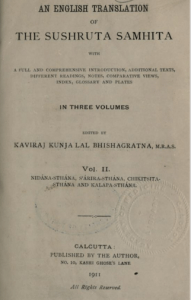Charaka Samhita and Haritaki
The Charaka Samhita is the ancient Indian texts that are the core of the Ayurvedic teachings. They are estimated to be written approximately 2900 years ago in 600-900 BC. In these texts
These ancient texts have sparked extensive discussion about whether they are original or have been added to introduce later religious bias.
if you are interested in the commentaries on these texts you will enjoy reading this link to Wikidpedia
Included in the Charaka Samhita is much information about herbal remedies.
The approach laid out in the Charaka Samhita is not one we are used to for example, in the Charaka Samhita there are the following recommendations about Haritaki:
Over-Saturation:
Causes: one who saturates himself excessively with unctuous, sweet,
heavy, slimy substances, new cereals, fresh wine, meat of marshy and aquatic animals,
milk and its’ products, jaggery and flour preparations and at the same time abstains from
physical movements including daysleep, comfortable beds and seats becomes oversaturated.
-Su23#3-4
Results: this, if not counteracted promptly, result in: prameha, diabetic
boils, urticarial patches, itching, anaemia, fever, leprosy [as well as other skin disorders],
disorders due to ama, dysuria, anorexia, drowsiness, impotency, over-obesity, lassitude,
heaviness in body, obstruction in sense organs and channels, disorders of consciousness,
sleepiness, swelling and similar other disorders. -Su23#5-7
Treatment of Disorders Due to Over-Saturation:
emesis, purgation, blood-letting, physical exercise, fasting, smoking,
sweating, use of abhayaprasa (a preparation of haritaki) with honey, rough food grains
and powder-annointment indicated in itching, patches, etc. (in ch. III). Su23#8-9
Triphala, aragvadha, patha, saptaparna, kutaja, musta, madana and nimbathese
Source: http://yousigma.com/biographies/Charaka%20Samhita%20(Acharya%20Charaka).pdf
Other illnesses listed that Haritaki helps include Leprosy. diarrhoea, menorrhagia,
internal hemorrhage, heart disease, anemia, intermittent fever, gulma, retention on urine,
jaundice, etc.:
Here is the section in more detail on Haritaki use and benefits:
Benefits and Actions of Haritake Fruit:
It possesses 5 rasas (tastes). It lacks only saline taste.
It is hot, beneficial, carminative, light, appetizer, digestive, life-promoting, tonic,
excellent sustainer of youthful age, alleviates all diseases and provides strength to all the
sense organs.
It alleviates leprosy (including skin disorders), gulma, udavarta, phthisis, anemia,
narcosis, piles, disorders of grahani, chronic intermittent fever, heart disease, head
disease, diarrhia, anorexia, cough, prameha, hardness of bowels, spleen enlargement,
acute abdominal disorders, excessive secretion of mucus, hoarseness of voice, disorders
of complexion, jaundice, helminths, edema, bronchial asthma, vomiting, impotency,
lassitude in organs, various obstructions in channels, plastering of heart and chest,
impairment of memory and intellect in a short time.
Ci1.1#29-34
Contra-Indications for [Long-term] Use of Haritake:
Those having indigestion, rough food, emaciated by indulgence in women, wine
and poisonous substances and afflicted with hunger, thirst and heat should not use
haritaki for long.
Ci1.1#35
Benefits and Actions of Amalaki:
It has the same properties as haritaki, only the virya is contrary (amalaki is cold).
When I study this information i see that there is so much worthwile to study in this. i look forward to reading these ancient texts in more detail.

Please enjoy this video on the topic.
